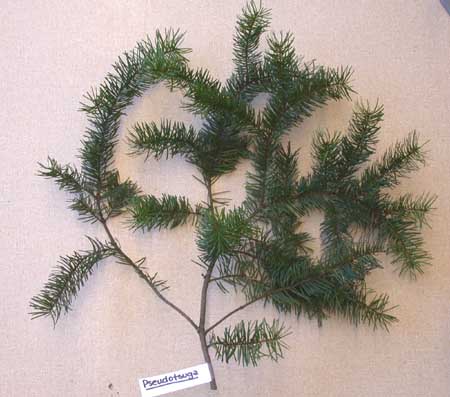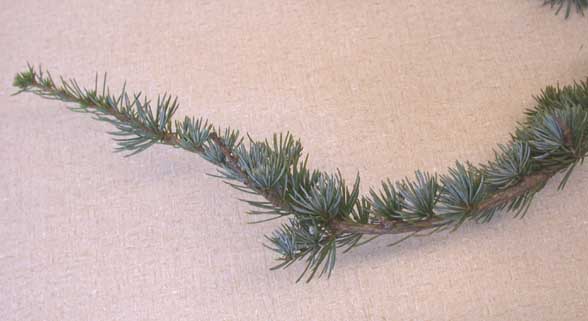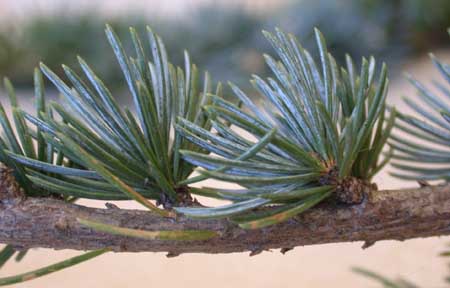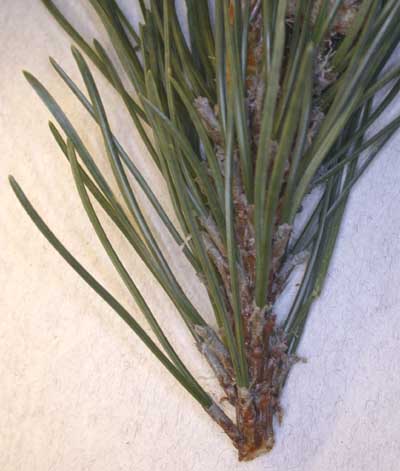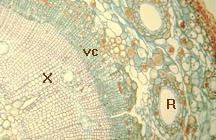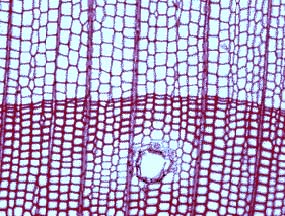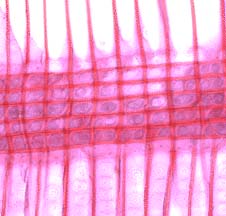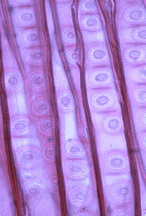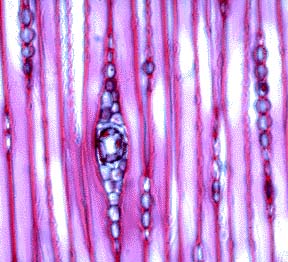STEM MORPHOLOGY AND ANATOMY
Branch Morphology
Long shoots are those with indeterminate growth. They are present on all trees. Here is a branch of Douglas Fir (Pseudotsuga). Each branch tip will keep growing.
Some branches also have short shoots (determinate). A good example is Cedrus. You can see that there are short lateral branches. These reach a certain size and then die (fall off).
Here is a close-up.
Another example of a plant that has short shoots is pine. Each fascicle (cluster) of leaves is a short shoot. It is a pretty small shoot having a very restricted number of needles. This pine has two needles per short shoot.
Pinus stem
Most of you are familiar with pine. Secondary growth is apparent in both the production of wood and the formation of bark. This stem cross-section is through a relatively young tree. You can see the xylem (X) in the centre which stains red. The vascular cambium (VC) is the region outside of this. The large cavities you see in the cortex are resin canals (R). Pine has lots of resin ducts in fact you can see small ones in the xylem tissue. Toward the outside of the section you can see the periderm. Do you remember what bark is?
Pinus (pine) wood sections
Examine the following three sections.
Transverse Section
Transverse (cross) sections are important for determining the number of years old a tree is. The growth ring is the increment of growth per year. You can see the boundary between two years of growth here.
The wood of conifers is mainly made up of tracheids. It is homogeneous which makes the wood easy to work, thus it has been called “softwood”. Many conifers have resin ducts (canals) like the one in this section. Parenchyma cells often line such ducts. Parenchyma cells are also present in the rays of wood. These are more easily visualized in longitudinal sections.
Longitudinal Sections
In the longitudinal sections observe the thickened wall, tapered shape and pits of the tracheids. There are two types of longitudinal sections: radial and tangential. Radial sections are sections which are made along the radius. Tangential sections are made perpendicular to the radius.
Radial Section
The radial section provides you with the opportunity to see the two major “systems” of the xylem. The rays make up the radial system which is comprised mostly of parenchyma cells (although some species of pine have tracheids oriented in this direction); it is important for conduction in the horizontal plane. The axial system is composed mostly of tracheids which run in the vertical direction, important for conduction upward. The radial section is good for determining the pitting between the tracheids and the ray cells (cross-field pitting). The type of pitting can be a diagnostic tool in identification.
The radial section on the right shows the pitting of the tracheids. The pits of tracheids in most of the gymnosperms have a thickening in the center called a torus. That gives it a dark colouration in the center of the pit.
Tangential Section
The tangential section gives you more information, such as the structure of the ray. How many cells wide and high are the rays?
When you are trying to get a three dimensional idea of what wood looks like it is important to view these three different types of sections.
STEM ANATOMY
What do other Gymnosperms look like?

